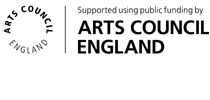Transformers: How enabling design has transformed disability
2012 is the year that the Paralympics come home to Britain and we are celebrating this with a summer exhibition looking at how enabling design has transformed disability. In the face of adversities the human race has an uncanny ability to survive, repair, learn and improve. Transformers will look at the brains behind some of these designs and innovations and at the people who use them.
Divided into six sections and featuring over 60 objects, films and still photography, the exhibition will explore different aspects of how design and invention is used to overcome disability.
Made to Measure charts the developments from the early forerunners of modern prosthetics to the most up to date engineering; the response to new materials and technologies and the brains and inspirations that have led to these developments. From peg legs, articulated leather legs through to the iLimb Ultra articulated hands being produced at Touch Bionics today, this section will showcase the history of prosthetic and orthotic technologies.
Domestic Science looks at innovative design supporting everyday domestic tasks and activities such as mobility aids and crockery that is easy to use and delightful to own. The Chairmobile designed by Lord Snowdon in the early 1970s, tactile ceramic tableware by Ikuko Iwamoto and the Sitting Socket, Mounted on a Toy Dog for children suffering from thalidomide will all be featured. Italian and Singapore designers Lanzavecchia+Wai design walking aids “for living not just for mobility” allowing the users to bring along their tea trays, magazines and books and even an iPad. Their quirky T, U and I canes will raise a smile as well as reminding us about what products await us when we get old!
Tools of the Trade explores disability as both cultural and ideological, requiring individual, community and large-scale social change within the workplace. People with physical disabilities still have a desire to work, especially if a life changing incident has occurred and they want to get back a sense of normality. Non more so that Giles Duley, a photographer who lost three limbs in Afghanistan and is now looking to fix a tripod and camera on his artificial limbs so that he can go back to work. His self portrait and his TED lecture will be on show.
This Sporting Life considers sporting activity from the grassroots to elite level and visitors will have the opportunity to see the Ossur Cheetah running blade – a carbon fibre foot designed for athletes with lower limb amputations and the Nike Fastskin triathlon suit designed to mimic shark skin. These are examined alongside the legacy of Stoke Mandeville.
Keeping Up Appearances looks at the changing public perception of disabilities and how major brands have used disability as a positive brand message. Textile designer Freddie Robins creates knitted garments with strong confrontational wording and an element of humour and the unexpected. Her “Short Armed and Dangerous” sweaters for Mat Fraser and “At One” for Catherine Long will be on display.
We are Robots examines the designs used to adapt the human body to interface with machines – cyborgs and robotics and will feature ‘The Eyeborg Film’. After losing an eye in an accident, the documentary film maker Rob Spence fitted a camera in his eye and made a film looking at how real cyborgs exist today. This final section reveals how digital technology, body augmentation and robotics are becoming an everyday reality in improving and enabling mankind. Are cyborgs only just around the corner?


















